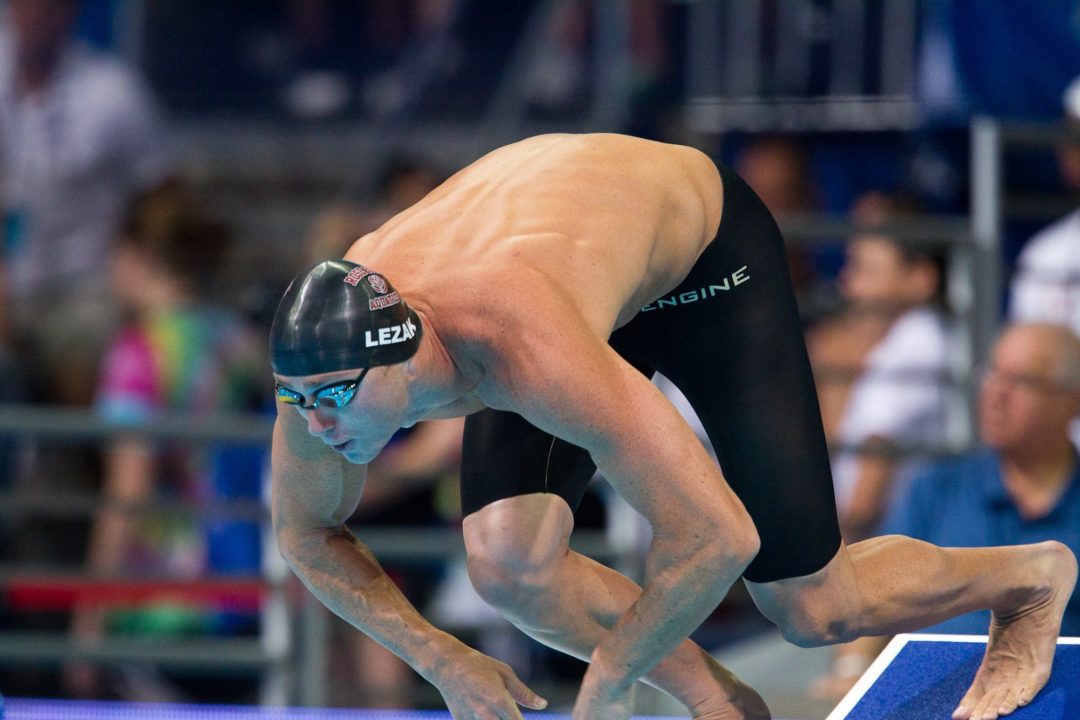Courtesy of Deniz Hekmati, BS, NSCA-Certified Strength & Conditioning Specialist, Founder of Swimmer Strength.
The main focus for any swimmer is to get faster, which can be accomplished by increasing physiological components, such as VO2max, lactate threshold, capillary density, power output, and also improving stroke efficiency. Subsequently, there is one factor that has been undervalued for many years, that has now come to play a crucial role in swimming, especially the spring events: the start.
The best ways to improve start and turn performances are found on land simply because one can manipulate force and power variables for optimal gains in explosiveness. Plyometric training for swimmers has shown drastic improvements for swimmers (Bishop et al., 2009). This is not just seen in older athletes, but also pubescent swimmers as well.
The variable that influences the starts and turns the most is the ground reaction force (GRF), which applies to when the swimmer is in contact with the ground. This component is on of the most defining characteristics in athletic performance in general. It implies that when an object is exerting force on the ground, the ground is equally exerting force back to the object – the swimmer. There are a few exercises that are directly correlated and have shown to be extremely beneficial for swimmers in this matter: back squats and countermovement jumps that target both horizontal and vertical displacements (West, Owen, Cunningham, Cook, & Kilduff, 2011).
 As important it is to improve GRF, power generation is going to equally significant. The true meaning of power lies within the rate of force development (RFD). If the swimmer is able to develop force rapidly, the starts and turns will be significantly improved. The table below represents an overview of how much the start is influenced in the various distances in the race in a study conducted by Lyttle & Benjanuvatra, 2013. This study evidently showed that strength and conditioning for swimmers have positive effects on reaction time from the blocks, velocity leaving the blocks and entering the water, breakout speed, and time spent on the wall in the turn phases.
As important it is to improve GRF, power generation is going to equally significant. The true meaning of power lies within the rate of force development (RFD). If the swimmer is able to develop force rapidly, the starts and turns will be significantly improved. The table below represents an overview of how much the start is influenced in the various distances in the race in a study conducted by Lyttle & Benjanuvatra, 2013. This study evidently showed that strength and conditioning for swimmers have positive effects on reaction time from the blocks, velocity leaving the blocks and entering the water, breakout speed, and time spent on the wall in the turn phases.
For a strength coach to design a program that emphasizes start and turn work, it is imperative to be aware of the possible risks of injuries that the exercises that come with the program. Prior to a plyometric regimen, swimmers need to have a strong background of strength training and be executing the exercises with proper form in order to avoid getting hurt. Therefore, swimmers should start learning how to properly perform core lifts (targeting large muscle groups moving 2 or more joints) at younger age, so that true explosive movements later do not have to be taught from scratch.
What needs to be appreciated more is, how much the start and the turns actually matter and the fact that optimal power improvements are made on land. Since current literature exists and suggests a strength program focusing on power, it is a good idea to acknowledge it and start getting to work.
Swimmer Strength is designed to help the swimming community gain access to evolving information regarding resistance training for any swimmer in any age group. On the website I discuss a wide range of topics in a blog and video format that will benefit swimming performances. “SWIMMER STRENGTH” closes gaps, addresses questions that need answering, and brings the swimming community together to optimize performances around the world.
Follow Swimmer Strength on Facebook.
Follow Swimmer Strength on Twitter.
References
Bishop DC, Smith RJ, Smith MF, Rigby HE. Effect of plyometric training on swimming block start performance in adolescents. J Strength Cond Res 23: 2137–2143, 2009.
Lyttle A, Benjanuvatra N. Start right? A biomechanical review of dive start performance. Available at: http://www.coachesinfo.com/category/swimming/321. Accessed: January 22, 2013.
West DJ, Owen NJ, Cunningham DJ, Cook CJ, Kilduff LP. Strength and power predictors of swimming starts in international sprint swimmers. J Strength Cond Res 25: 950–955, 2011.

 SWIMMER STRENGTH
SWIMMER STRENGTH
Interesting post and great comments of preparing an athlete for plyometrics. Some other comments:
1) Bishop (2009) looked at intermediate adolescent swimmers and did not have a comparison group. Perhaps the plyometric group would have improved as much (or even more) with another form of training (perhaps simply practicing the start).
2) West (2011) only found lower body strength and power correlate with starting success in sprint International sprinters. This is important distinction from lower body strength and power gains causing improved starting performance (especially in non-elite or non-sprint swimmers).
The current notions for resistance training and swimmers, is low volume resistance training may be beneficial for swimmers (Girold 2007), but higher volume resistance training may not… Read more »
Damn Lezak, you are BIG.